Daulatabad is an ancient city, in the north-central Maharashtra state of India, It is believed that lord Shiva once stayed in this place, hence it is also traditionally known as Devagiri or Deogir. It is situated in a hilly upland area about 13 km from Aurangabad. Located on a pyramid shaped hilltop, Daulatabad fort is considered as one of the most spectacular forts in Maharashtra. It is considered as one of the most coveted and impregnable forts of India.
It was constructed by the Rashtrakuta kings who built the world famous Kailasa caves, the fort was ruled by the Yadavas between 1187 to 1318 AD. Then, Allaudin Khilji attacked Daulatabad. It was here in 1347, Hasan Gangu Bahamani established the Bahamaini kingdom, shifting soon after to Gulbarga and they ruled here over 150 years. The fort was held as a fine and valued fortress by successive dynasties in the Deccan until it was taken over by the Nizams of Hyderabad in 1724 A.D. and it remained under their control till independence. During independence, in the unused mosque inside this fort, called Jami Masjid, an idol of Bharat Mata was erected by Hindus and this place thus came to be called as Bharat Mata temple.
The main structures at Daulatabad are the Jami Masjid and Chand Minar. The fort’s central pink minaret, 110 feet Chand Minar played a defensive as well as religious role in Daualatabad Fort and it is the second tallest tower in India after the Qutub Minar.
Jami Masjid, the mosque located within the Daulatabad Fort, was built in 1318 by Khilji ruler of Delhi, Qutub-ud-din Mubarak. This mosque is adorned with 106 carved columns/ pillars that were looted from several Hindu and Jain temples that stood at and around this site. The interior of the mosque is a blend of Indic and Islamic style of architecture narrating the painful testimony to the brutal persecution of Indic spaces. Muslim invaders, emperors and their followers used this space in Daulatabad fort as Jama Masjid for close to 700 years. One can enter the mosque through domed chambers approached by a series of steps.
According to various sources available on international history sites – It seems correct to say that this mosque was converted from a Hindu temple under the sovereignty of the Hindu kingdom, which obviously points to after plunder and religious persecution . The same seems true for the entire fort. The evidences are crisp throughout the structure of the mosque. Also, Hindu motifs and elements of construction can be clearly seen in the bases and the tops of the numerous pillars, and the inside of the ceiling. Viewing the whole space through the pillars, one may feel that he/ she is in a Hindu or Jain temple.
Quoting from the book ‘Hindu Masjids’ by Prafull Goradia –
What however is of interest to us is the unusual shuddhi that the temple undervent inside the outer·wall of the fortress. This historical event took place in 1948 on the morrow of the police action by the Government of India during the takeover of the Nizam’s Hyderabad. There had been a great deal of local pressure for the restitution of the temple. Leaders like Sardar Vallabhbhai Patel as well as Shri Kanhaiyalal Munshi were also aware that it was a Jain mandir which had been forcibly converted into a masjid by Alauddin Khilji. ·However, to avoid giving a religious or a communal colour to the shuddhi or reconversion, the idol installed in the sanctum sanctorum was that of Bharat Mata. It is therefore now known as the Bharat Mata temple, although for 700 years it had been called Jami masjid. The mandir was built on a plan not dissimilar to Palitana in Gujarat and Dilwara at Mount Abu, Rajasthan. There is a large courtyard. There were the usual traditional 52 pillars as in Jain places of worship. At the western end was a hall, typical of an ancient temple. A flat roof was held aloft by 152 stone pillars.The author and his colleagues during their visit in 2001 were told on authority that the pillars were constructed according to the Himar Panti style of architecture,one of whose special characteristics was the interlocking of stones without the use of any cementing material.
The flat roof had been modified to the extent that a small dome had been raised above where the mimbar was, prior to the shuddhi in 1948. On several of the beams were engraved the Chalukia emblem called Kiritmukh Patti which only confirmed that the temple was built during Chalukia rule. An unusual sight was the terracota colour with which the 152 pillars were coloured upto a height of about 12 feet. Above that, was white colouring. We were told that this was done during the Nizam’s period. One can only presume that the intention might have been to distract attention from the Jain character of the edifice. Also, between the outermost wall and the third fort wall, there is a structure which is much smaller than the Bharat Mata temple but of a similar design. There is however no courtyard. Uncannily, an image of Mahavir Swami can still be seen on more than one of the pillars.
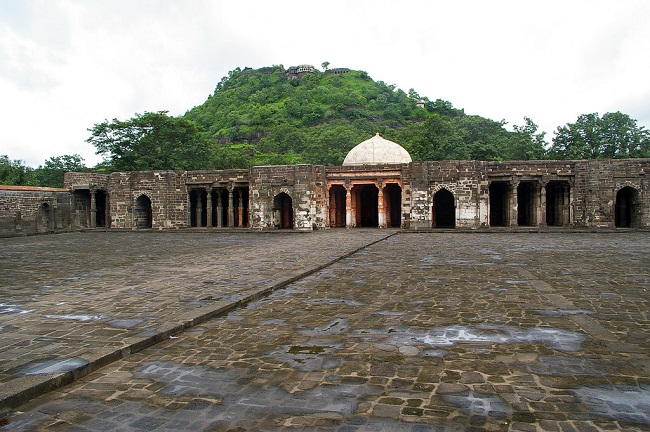
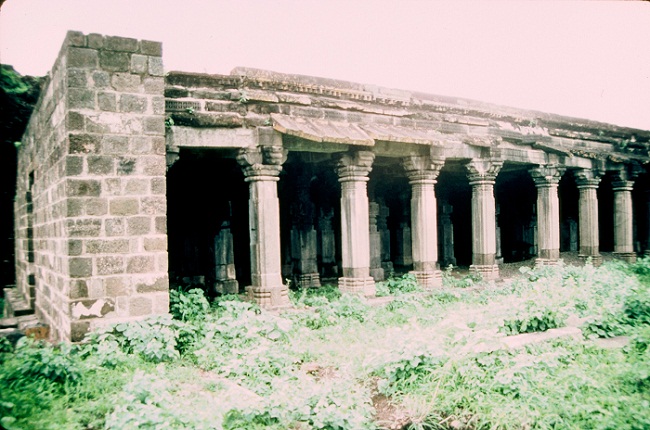
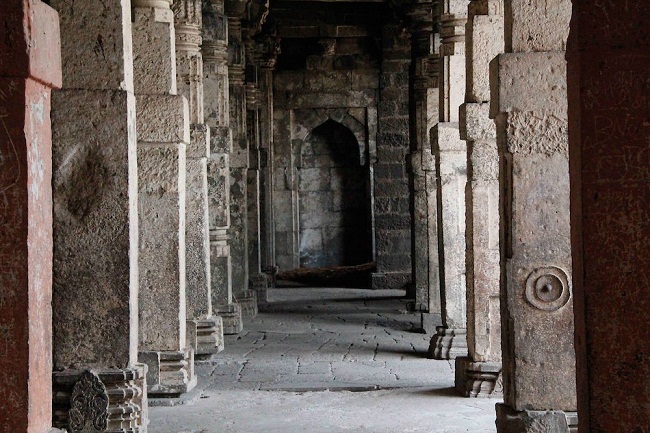
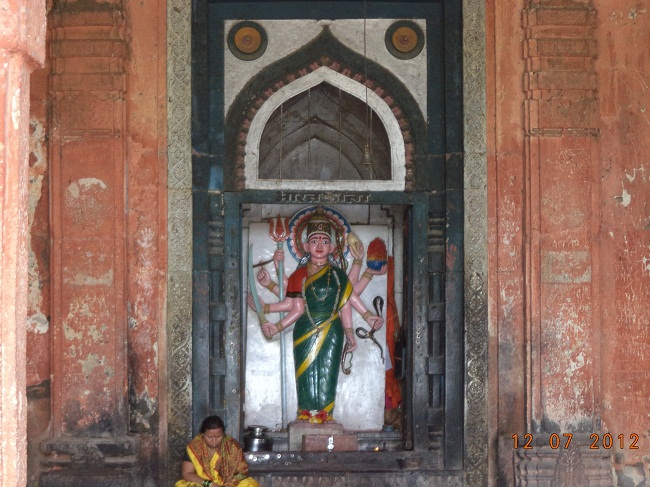
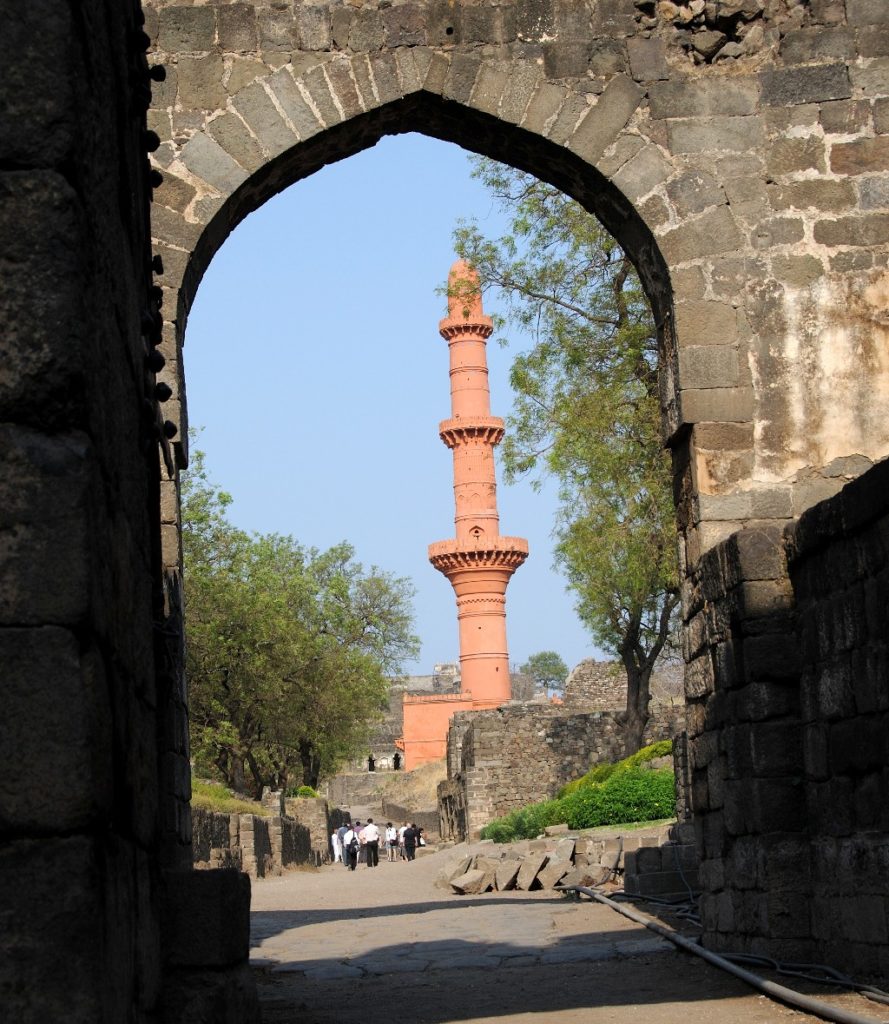
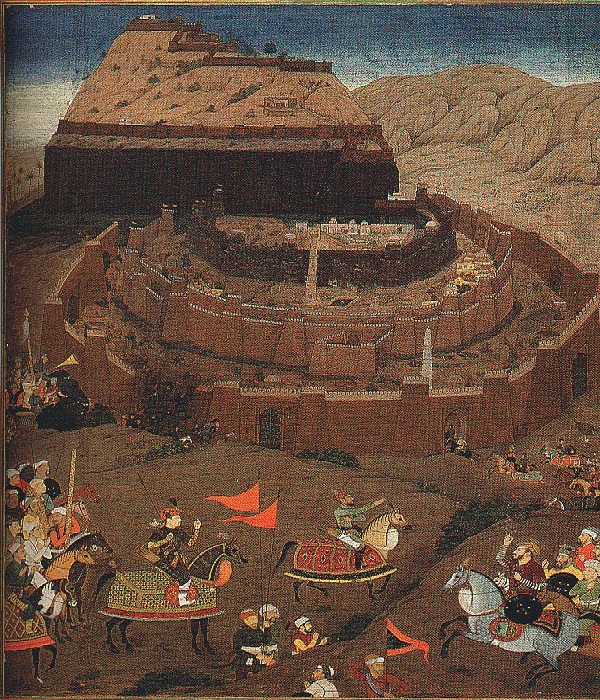
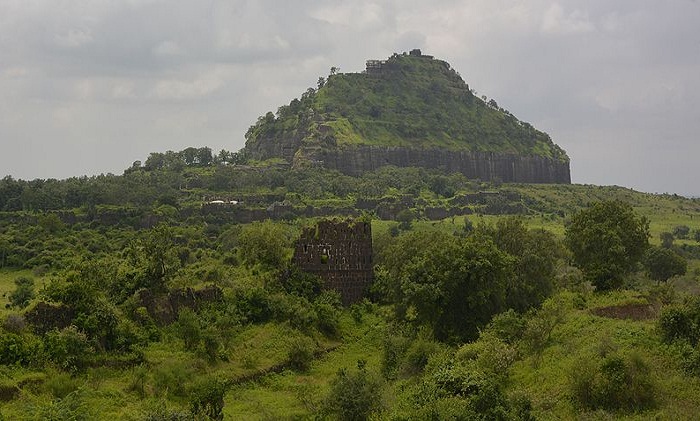
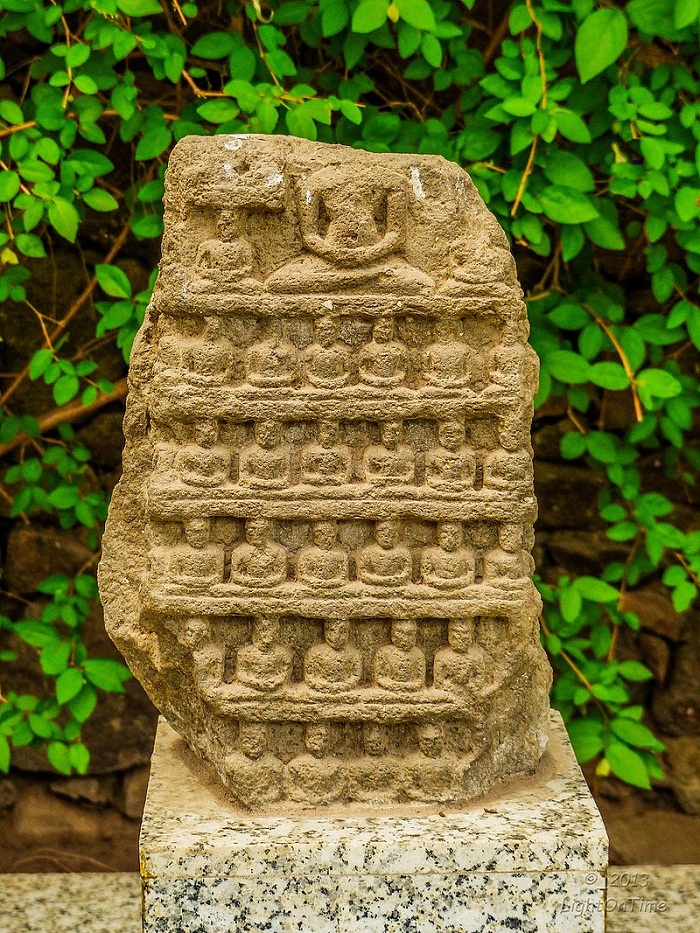
(This file is licensed under the Creative Commons Attribution 3.0 Unported license.
Attribution: Udaykumar PR)
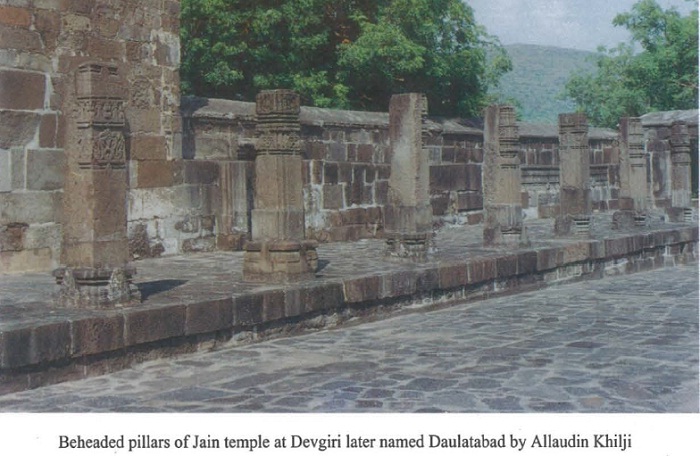
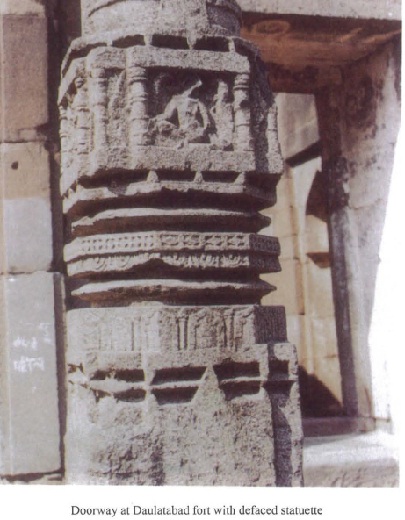
It feels surreal to go through history of this fort in the mind, the capturing, destabilizing of a faith to make way for intolerant iconoclasm that took pride of simply subjugating the former, instead of assimilation and real mutual respect. It would be great to see this fort restored as the traditional Devagiri region, with archaeology going back to time as much as possible to resurrect the aura and sacredness of the place. Restoration of ancient Hindu/ Indic spaces is an elaborate process, it will take its time but it needs to be done.

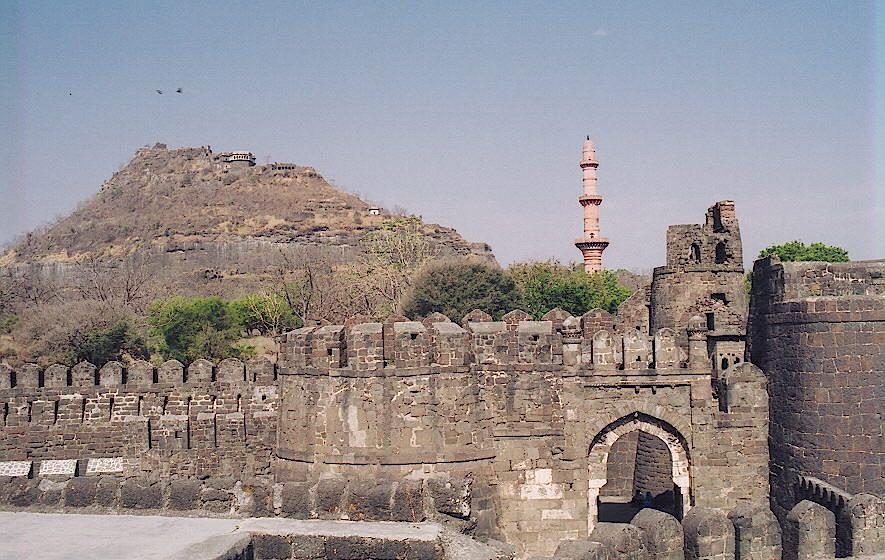
Very pertinent and important point.
Hello! It is clearly a Jain temple inside the fort, why does your heading say Hindu temple, why can’t you mention Jain?
Subclause of Article 25 says that Hinduism , Jainism and Buddhism will be referred collectively as Hinduism. All three religions were started in the same geographical region, they have a common architectures all over the country. Moreover I’d say Jainism and Buddhism are more pure family form of Hinduism itself. The fort is named or lord Shankara and has jain temple inside…… See… That’s the beauty of these 3 religions. They go hand in hand. No barbaric history in the name of religion.Hope, you get a vision and a reason to ignore the difference.